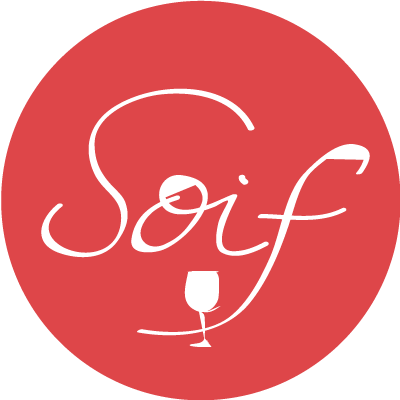2015 Pascal Jolivet Sancerre Rosé - Loire Valley, France
Rosé is finally having its moment. Once shunned because of a reputation for being a low-budget, innocuous and sweet, it’s finally emerged as the must-have wine for summer. While we smugly sit here thinking, “we told you so” we are actually thrilled that rose now generates the appropriate amount of excitement.
That being said, just because it’s pink doesn’t mean it’s good. Everyone is making a rosé these days, so how is one to choose?
You want the real answer?
Taste a lot of them.
Guess what? We’ve done that for you… I know, I know, how nice of us.
After much arduous pink wine swigging and sloshing, we selected the very classy, very tasty Sancerre rosé from Pascal Jolivet. Sancerre is a village in the eastern Loire Valley in France known for white wines made from Sauvignon Blanc and Red and Rose wines made from Pinot Noir. The rosé wines from this area are generally a bit higher toned with lots of acidity and bright citrus notes. Think fresh squeezed pink grapefruit and tangy strawberries coupled with the classic Sancerre "chalky" minerality.
This rosé is a blend of both direct press and saignée juice (free run juice from just-crushed grapes). Pascal Jolivet practices a minimalist winemaking style, allowing nature to take it's course, and focuses on natural wines that are easy to drink, not ‘technical wines’ that are heavy and don’t go with food.
While this is a perfectly appropriate poolside beverage, don’t hesitate to pair it with a green salad with avocado, radish and citrus for a delicious summer lunch.
2013 Domaine du Pas de L'Escalette "Les Clapas" - Côteaux du Languedoc, France
For this month's red wine, we found Domaine du Pas de l’Escalette in Terraces du Larzac, a sub-appelation within the Côteaux du Languedoc in Southern France.
Though the region has a history of winemaking that dates back to the Roman times, Terraces du Larzac wasn’t recognized as its own appellation until 2005. Honestly, maybe it's because it was just too hard to get to--not long ago, mules were the main form of transportation around these hills. It’s rugged to say the least.
Thankfully some people aren't afraid of rugged...
After cutting his teeth as the winemaker at Domaine Pelle in the Loire Valley, Julien Zernott and his wife Delphine Rousseau decided to wander south to look for a new wine making opportunity. In 2003 they found this off-the-beaten path estate with a collection of parcels already well situated and organically farmed. The 15 hectares of mature vineyards are divided among almost 30 separate parcels nestled on high terraces supported by “clapas”, the local name for the stone walls that surround the vineyards planted on the limestone hillsides. This is one of the coolest areas of the Languedoc, temperatures can vary as much as 68 degrees from day to night. This diurnal swing allows the grapes to retain their lively acidity--a necessary component to a balanced finished wine.
The 2013 “Les Clapas” is a blend of 50% Syrah, 30% Carignan and 20% Grenache. It's a medium-bodied wine full with notes of red fruits, dried flowers, spices, and savory herbs. Tannins are there, but are very fine and supple. Drink this with a hearty lamb dish to emphasize both the strength and elegance of this tasty wine.







